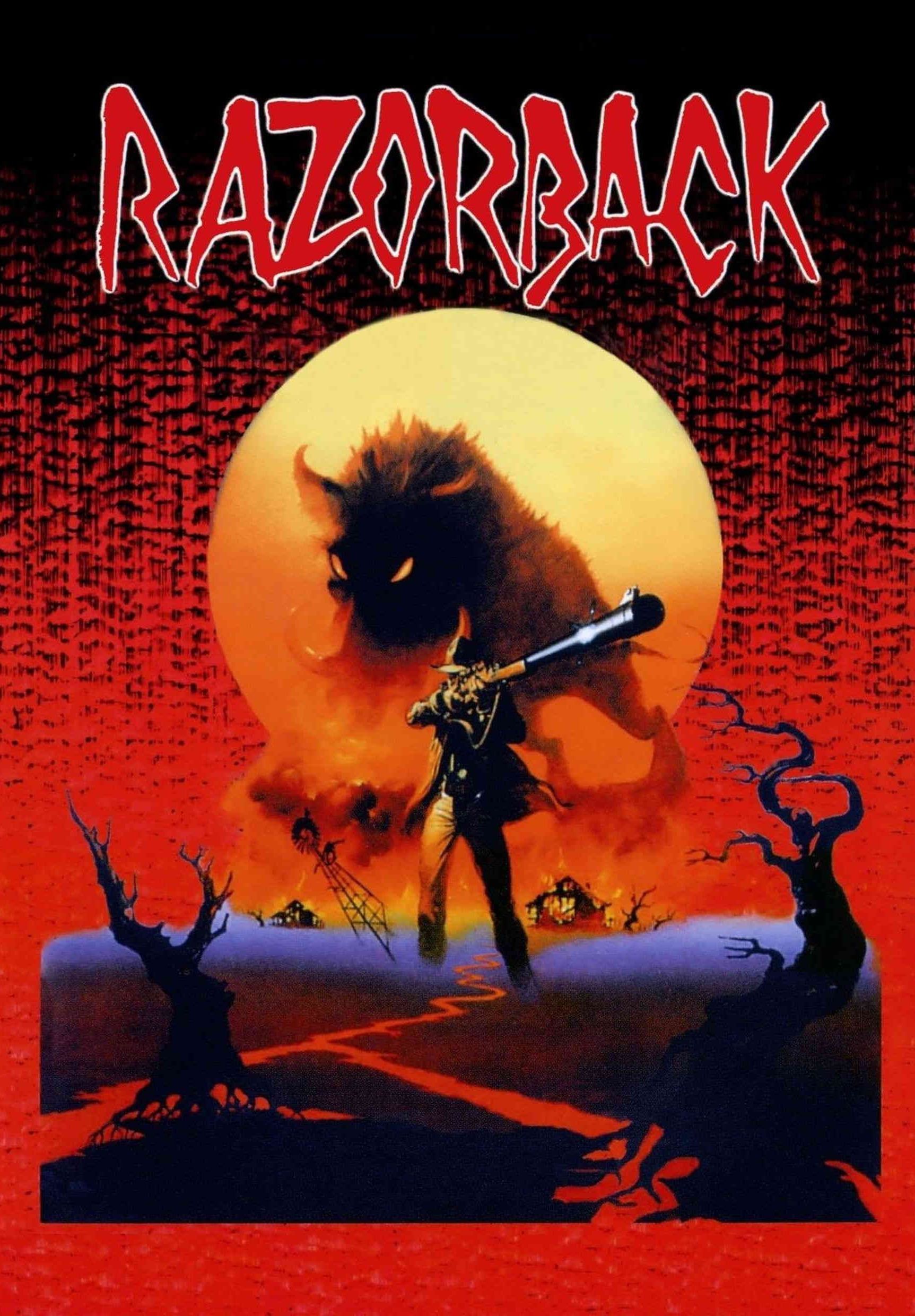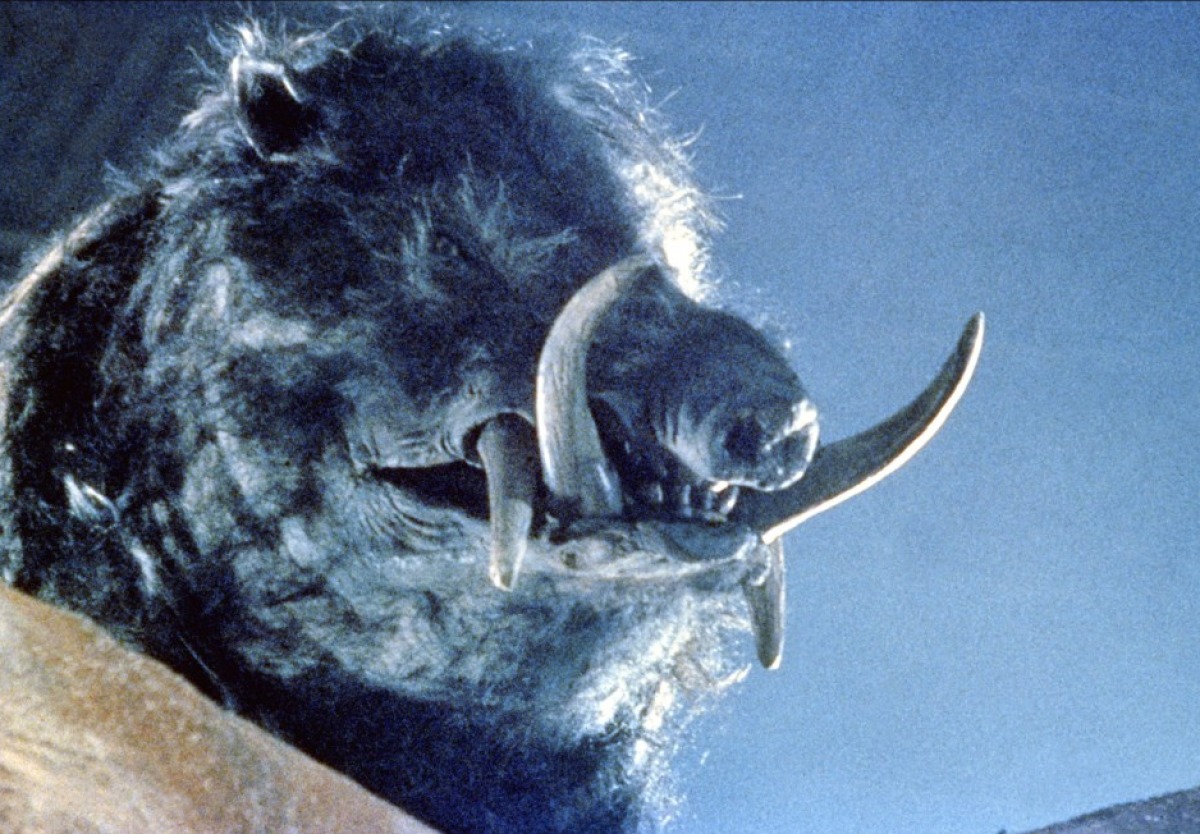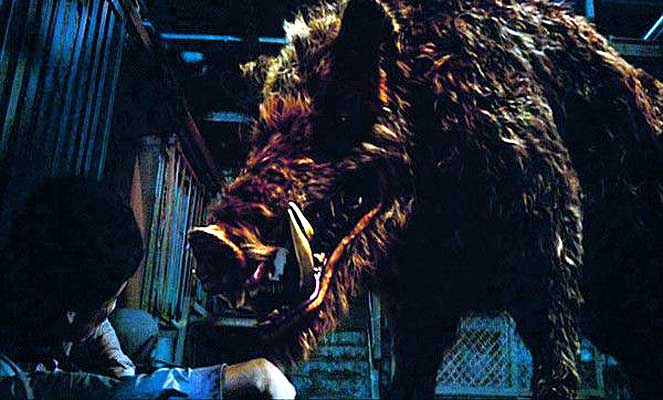When was the last time you heard of a colossal killer boar? There have been a number of films with violent themes, but Razorback stands out as being particularly vicious. The savagery contrasts with the gorgeous and breathtaking images of Australia’s outback, resulting in a film that you will not soon forget. Razorback is a natural horror film from Australia that was released in 1984.
Everett De Roche wrote the screenplay for the film, which was directed by Russell Mulcahy in his directorial debut and was based on Peter Brennan’s 1981 novel. This was the second picture to be adapted from a novel to the big screen after Jaws.
The plot revolves around a gigantic wild boar terrorizing the Australian outback, killing and devouring humans. The film was released on November 2, 1984. While the film was a flop in the United States, it was a hit in Europe, particularly France.
Mulcahy, the filmmaker, was well-known at the time for his great work on music videos for major musicians like Elton John, and his particular video style was well regarded. This was his first foray into the realm of filmmaking, and cinematically, it is a breathtakingly stunning film that one must see to understand what I am talking about. Let us have a look at this one-of-a-kind film and investigate its weird and gory features.
A new breed of terror – Razorback

The outback is shown in Razorback as a lawless, brutal landscape. This time, though, the threat in the area is posed by a massive, hungry boar lurking in the continent’s perilous backyard. The movie’s violent opening is based on Lindsay Chamberlain’s highly publicized 1980 case. Chamberlain was convicted of a crime that she blamed on a dingo while on holiday in Uluru with her nine-week-old daughter.
However, she was later exonerated after the conviction. Meanwhile, in Razorback, kangaroo hunter Jake Cullen is babysitting his grandson, Scotty, when the film’s force of nature plows through his home and kidnaps him. Jake is charged with the boy’s disappearance, but due to a lack of evidence, he is finally acquitted. Jake goes out to clear his record and take revenge for the loss of his grandson, believing that a man-eating, rhino-sized razorback is wandering the neighborhood.
The story then moves forward and focuses on a woman called Beth Winters, played by Judy Morris who is an animal activist from New York. On the insistence of her husband, she comes to the Australian outback to cover the poaching of Kangaroos and other Australian wildlife which were being used to make pet food in the gnarliest of manners.
She reaches there and as all investigating journalists do at some point or the other, she gets into trouble with her intrusive questioning. This portion of the movie also has beautiful and cinematic shots of the desert terrain and the blazing sun. She bumps into Jake outside a bar and interviews him after which she goes off on her own to find out what exactly is going on.
She manages to get a video of Dicko and Benny who are the two thugs that run the illegal pet food operation in the outback. They notice her and chase her down and Dicko attempts to sexually assault her but is stopped when the massive razorback appears.
Although the animal chases the two men away, it also mauls and kills Beth in a grisly manner, most of which was cut out in post-production for being too brutal. In this manner, a lot of scenes were either cut or completely removed from the movie because it was too brutal and violent and they simply could not show it to audiences.
With Beth dead, the news of her death becomes a sensation but local police and all other officials ascribe it to her falling down a mining shaft in an accident. Beth’s husband, Carl Winters makes his way to the Australian outback to find out the truth behind what exactly happened to his wife. Carl comes and under a false name he hangs out with Benny and Dicko.
They take him Kangaroo hunting but leave him there to die and it is here where we see the famous ‘dream sequence’ in the movie. A dehydrated and tired Carl with torn up feet traverses through the Australian terrain and we see in the background that there are two moons.
It is after seeing these two moons that Russell Mulcahy received a surprise phone call from filmmaker and director Steven Spielberg who was curious about how Mulcahy had achieved some of the effects in the dream sequence, including the shot of the two moons.
He finally makes it out of the desert and there, he hides atop a windmill to avoid a feral pig attack, who are egged on by the razorback and then crawls out, hallucinating the entire time, until he reaches the distant home of Sarah Cameron played by Arkie Whiteley, a friend of Cullen’s who has been concerned about the local feral pig populations’ rising aggression.
He tells her that he saw a massive boar, hearing which she calls Jake and they decide to catch the beast once and for all. It turns out that Jake and Sarah were friends because Jake was her supplier when it came to pigs for her research. Jake goes out after discovering that Carl had seen the razorback and manages to shoot it with one of Sarah’s tracking darts. In the boar’s feces, he also discovers Beth’s wedding ring, which he gives to a distraught Carl.
What happens next shows that the giant-killing boar is not the only villain in this film and that the two brothers, Benny and Dicko are in many ways, far worse. They overhear a call in the pub where it is said that Jake knows what really happened to Beth and fearing that they will be implicated in the crime, they decide to track down Jake, break both his legs and leave him for dead.
With Jake immobilized, he is unable to defend himself when the razorback appears and in a rather sad manner, the man who has spent a considerable amount of his lie chasing this boar is killed by it. This is another scene that was removed because of its violent nature.
Carl and Sarah arrive on the scene and Carl notices Dicko’s cleaver marks and knows that it is their doing. Having lost both Beth and Jake because of these brothers, he decides to finish it once and for all. Carl assaults Benny at his and Dicko’s lair, interrogating him by dangling him over a mine shaft and then throwing him down it. Carl corners Dicko in the cannery while Sarah gathers a posse to track down the razorback using the tracker Jake shot into it.
The razorback emerges out of nowhere and mauls Dicko. When Sarah appears, the razorback chases Carl into the factory and continues to pursue him despite having his throat impaled on a broken pipe. Carl drags the boar up onto a conveyor belt, which tosses it onto a big fan, slicing it to bits, while the razorback damages the cannery’s generator, sending the machines spinning out of control. Carl discovers and rescues Sarah, who had been knocked unconscious, after turning off the machinery, and the two embrace.
Mulcahy does an excellent job of transferring the artistic logic of music videos to the cinema, with lots of fast cuts, bright colors, and a willingness to let songs stand alone in their iconic grandeur without thinking about how they go together. Razorback also massively benefits from Dean Semler’s cinematography. He was hired based on his work on Mad Max 2, one of the best-looking films ever to be shot in Australia. The movie appears to be a nightmare, with brilliant, colorful, and wonderfully constructed imagery and it required that horror vibe sell its fundamental concept of a huge killer boar.
Gigantic Boar Monster Razorback Explored

Everything is bigger in Texas but they are massive in Australia and that goes for almost all species of bugs, insects, reptiles, and animals that is exactly why a massive killing boar isn’t completely out of the realm of conception for this movie. There has always been an infatuation with the down under and that is the sentiment that this movie largely plays on.
The Razorback was a massive wild boar that roamed Australia’s outback, murdering any animals or people it came across. The Razorback is a massive boar with shaggy grey hair and two pairs of tusks, one on top of the head pointing down and the other on the bottom jaw pointing up.
The monstrous boar is more than five times the size of an ordinary razorback. Razorback is a scientific term for a feral pig, as well as Australian slang for characterizing them in the outback. Because of their high, hair-covered backbone and bad temper, wild boars were dubbed “razorbacks.”
Wild boars are extraordinarily robust and durable, combining an incredible tolerance for pain and blood loss with a dense skin and massive subcutaneous fat deposits that act as natural armour. Anyone who has hunted wild boars knows that you must be extremely precise with your bullets because they can withstand a lot of abuse and still kick ass.
This is also shown in the movie itself when Carl pretty much impales the razorback through its neck but it keeps charging at him with full force. The brutality and strength of the razorback is also seen in the scenes where it literally rips half of a house away and also kills both Beth and Jake by impaling them and mauling them to death.
A massive animatronic was used to portray the creature. For the film, six animatronic boars were created, one of which was specifically engineered to ram into automobiles. A $250,000 full-size, fully animatronic model razorback was developed and is only on display for a few minutes. The fact is that Mulcahy did not even want to show the boar in its entirety but the studio pressured him into doing it because they spent a quarter of a million dollars behind building the giant thing. In the end, it looked quite real, especially in the shots that it was visible in.
The film was and continues to be compared by several commentators to the iconic natural horror film Jaws. Both films use special effects monsters sparingly in order to enhance suspense and conceal technical flaws. In fact, this film has also been referred to as ‘Jaws on land. If you notice, it is very rare that the creature is seen completely and that is because it was thought that showing the whole creature would take away from the ominous and scary vibe that the film had built up.
Why should you watch Razorback?

The razorback’s flaming, cruel eyes represent nature’s misery, and spectators will find it difficult to turn away. Mulcahy’s picture was once considered excessively imitative or weird, but it is now viewed in a whole different way.
The tale has a good amount of nuance, and the visual output is fantastic. Above all, there’s a visual poem about the outback concealed behind the ecological doom and creature mayhem. Mulcahy’s picture is a monument to the outback’s size and that only a vast, sparsely populated territory like this could hide such a massive animal in plain sight. It is also an abrasive reminder of humanity’s role on the planet. The more humans encroach on nature, the more it responds in kind.
The one-of-a-kind photography and cinematography make it an entertaining and visually impactful watch. The script is pretty simple and Mulcahy wanted to keep it that way. Thus, instead of dialogues, he used impactful visuals to tell the story of the outback and its secret.
You should watch it because it is arguably one of the best monster films made to date and Mulcahy’s mastery will never be forgotten. While a killing boar might seem weird or not scary enough, this movie will definitely make you look away in horror and disgust quite a few times. Don’t sleep on this one!
